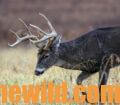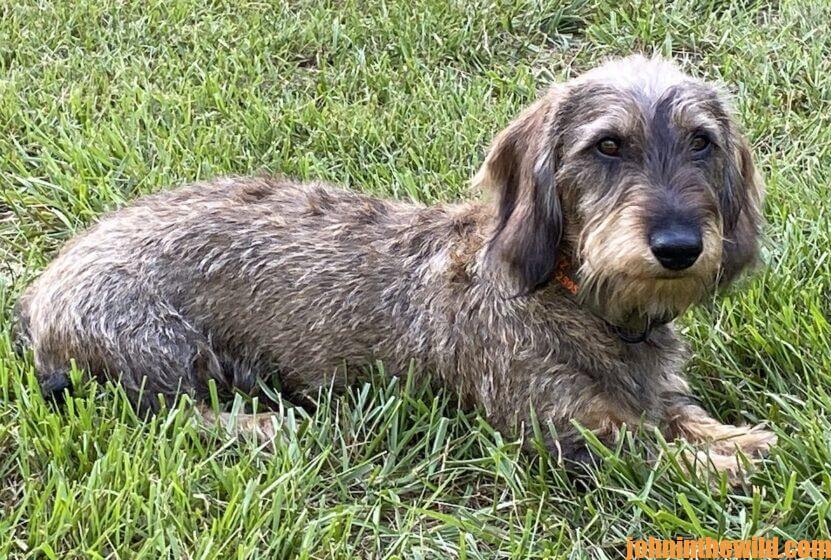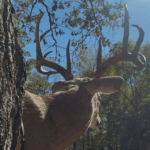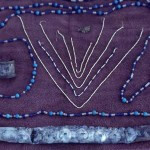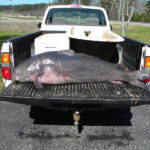Editor’s Note: In many southern states, deer season is still continuing through February, which means hunters will have to deal with the problem of recovering wounded deer. A growing number of hunters in each state are training tracking and trailing dogs to find and recover wounded deer. More states are opening their doors to allow hunters to use tracking dogs – even sometimes on public lands. Who are these folks? Why are they buying and/or teaching dogs to become tracking dogs? What tools are they using to teach keen-nosed dogs to find deer when the blood trail has run out? If you live in a state where hunters are permitted to use tracking and trailing dogs, you may want to consider getting a young dog now and training him to track deer for next year’s deer season. (Be sure to check your state’s regulations). I met Patrick Jones of McCalla, Alabama, who’s in the construction business at the Department of Conservation’s Adult Mentoring program for bowhunting deer. Jones told me about how a tracking and trailing dog could make a huge difference in your enjoying deer hunting.
According to Patrick Jones, “Many more hunters have started training tracking dogs than there were six years ago. When I first started hunting my tracking dog back then, there might have been only two people in a county that had tracking dogs. Today perhaps 20 people in that same county may have tracking dogs. I think that’s great. No hunter wants to lose a nice buck – or even a doe – he or she has shot.”
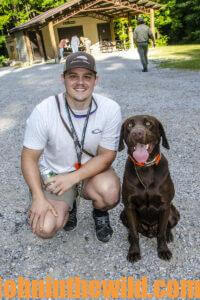 Some people believe that you must have a certain breed of dogs to train them to be tracking dogs, but that’s not true. As Jones reports, “If a dog wants to hunt, he can be taught to hunt a wounded deer. If a dog doesn’t want to hunt, he won’t be a tracking dog. I’ve seen birddogs, Wiredhaired Dachshunds (a traditional European tracking dog), rabbit dogs and hounds used as tracking dogs. However, I like a Labrador retriever to train for several reasons. My Lab is a multipurpose dog: I can take him to locate wounded deer, and that’s what he’ll do; or, I can sit him in a duck blind, or a dove stand, and he’ll retrieve ducks or doves for me; or, when I get back home, that same dog may get up in the bed and sleep with my children. I’ve been with some hunters who have dogs they’ve gotten from the pound but have spent the time to train them. Some mixed-breed dogs make excellent tracking dogs.”
Some people believe that you must have a certain breed of dogs to train them to be tracking dogs, but that’s not true. As Jones reports, “If a dog wants to hunt, he can be taught to hunt a wounded deer. If a dog doesn’t want to hunt, he won’t be a tracking dog. I’ve seen birddogs, Wiredhaired Dachshunds (a traditional European tracking dog), rabbit dogs and hounds used as tracking dogs. However, I like a Labrador retriever to train for several reasons. My Lab is a multipurpose dog: I can take him to locate wounded deer, and that’s what he’ll do; or, I can sit him in a duck blind, or a dove stand, and he’ll retrieve ducks or doves for me; or, when I get back home, that same dog may get up in the bed and sleep with my children. I’ve been with some hunters who have dogs they’ve gotten from the pound but have spent the time to train them. Some mixed-breed dogs make excellent tracking dogs.”
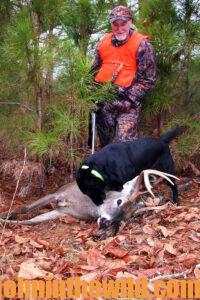 Joseph Dunn, also of McCalla, Ala., (205-568-3186) explains, “I had a friend who had a tracking dog, and he let me go with him several times to recover hunters’ deer. The first hunt I went on, his dog tracked a shot deer for 1,500 yards. The deer was shot a little bit far back, and we spent hours searching for the deer. We eventually located him, but coyotes had already gotten to him before we did. At least the hunter was able to recover the buck’s antlers and cape, even though the coyotes had eaten a good portion of the rear of his deer. When we located that deer, I was absolutely certain we never would have found it without my friend’s tracking dog. That hunt got me interested in trailing and tracking dogs.
Joseph Dunn, also of McCalla, Ala., (205-568-3186) explains, “I had a friend who had a tracking dog, and he let me go with him several times to recover hunters’ deer. The first hunt I went on, his dog tracked a shot deer for 1,500 yards. The deer was shot a little bit far back, and we spent hours searching for the deer. We eventually located him, but coyotes had already gotten to him before we did. At least the hunter was able to recover the buck’s antlers and cape, even though the coyotes had eaten a good portion of the rear of his deer. When we located that deer, I was absolutely certain we never would have found it without my friend’s tracking dog. That hunt got me interested in trailing and tracking dogs.
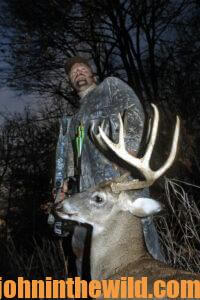 “Every morning before I go to work, I work with my Labrador retriever, Heavi, which is his shortened, registered name, on retrieving and tracking. He’s a top-notch retrieving dog and has developed as a tracking dog. Right now, I typically charge an initial $100 to go out and look for a hunter’s deer with my dog, and then an additional $100, if we find the deer, depending on how far I have to drive from my home to where the hunter’s shot his deer. I also base my price on whether or not I can go according to my work schedule, or if the hunter wants to wait until I can get off work and go. I’ve been working with Heavi on tracking for two years.”
“Every morning before I go to work, I work with my Labrador retriever, Heavi, which is his shortened, registered name, on retrieving and tracking. He’s a top-notch retrieving dog and has developed as a tracking dog. Right now, I typically charge an initial $100 to go out and look for a hunter’s deer with my dog, and then an additional $100, if we find the deer, depending on how far I have to drive from my home to where the hunter’s shot his deer. I also base my price on whether or not I can go according to my work schedule, or if the hunter wants to wait until I can get off work and go. I’ve been working with Heavi on tracking for two years.”
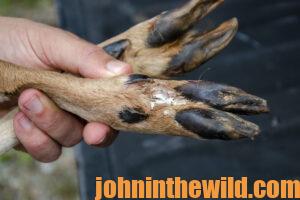 The toughest track Dunn says he’s ever followed was a shoulder shot on a doe that left very-little blood on the ground. “There’s no way the hunter or I would have found that deer without Heavi, because there wasn’t a good blood trail,” Dunn emphasizes. “What I’ve learned is that these tracking dogs don’t have to have blood to follow the scent of a wounded deer. They track the deer because of the creamy substance that the deer leaves, which is nearly invisible to the human eye, and comes from the deer’s interdigital gland between the deer’s toenails where there’s an opening. You can use a small screwdriver or a car key to get that creamy substance out of that hole between the deer’s toenails, and generally the wax will be white. Some deer don’t have very much of that interdigital wax between their toes, but other deer’s feet may have a lot of wax between their toes. I think that when a deer’s wounded, that pasty substance puts out a stronger scent that’s secreted from the interdigital gland on the deer’s hooves. I really believe that’s the scent a tracking dog uses to follow a wounded deer and locate him.”
The toughest track Dunn says he’s ever followed was a shoulder shot on a doe that left very-little blood on the ground. “There’s no way the hunter or I would have found that deer without Heavi, because there wasn’t a good blood trail,” Dunn emphasizes. “What I’ve learned is that these tracking dogs don’t have to have blood to follow the scent of a wounded deer. They track the deer because of the creamy substance that the deer leaves, which is nearly invisible to the human eye, and comes from the deer’s interdigital gland between the deer’s toenails where there’s an opening. You can use a small screwdriver or a car key to get that creamy substance out of that hole between the deer’s toenails, and generally the wax will be white. Some deer don’t have very much of that interdigital wax between their toes, but other deer’s feet may have a lot of wax between their toes. I think that when a deer’s wounded, that pasty substance puts out a stronger scent that’s secreted from the interdigital gland on the deer’s hooves. I really believe that’s the scent a tracking dog uses to follow a wounded deer and locate him.”
 Dunn reports that he won’t put Heavi on a deer’s track that he’s not fairly sure that the deer will be dead when they find him. Dunn says, “I’ve got a lot of money invested in Heavi, and I don’t want him to be on his own, find a buck that hasn’t expired, and him possibly get stabbed by one of the buck’s horns. Now, if I hunt with somebody else, like my friend Patrick Jones, who has a good dog, then two dogs can keep the buck distracted enough to make sure neither dog gets gored. I’ve been working with tracking dogs for the last four years, and I really enjoy watching my dog work and find deer that would have been lost except for Heavi’s keen nose.”
Dunn reports that he won’t put Heavi on a deer’s track that he’s not fairly sure that the deer will be dead when they find him. Dunn says, “I’ve got a lot of money invested in Heavi, and I don’t want him to be on his own, find a buck that hasn’t expired, and him possibly get stabbed by one of the buck’s horns. Now, if I hunt with somebody else, like my friend Patrick Jones, who has a good dog, then two dogs can keep the buck distracted enough to make sure neither dog gets gored. I’ve been working with tracking dogs for the last four years, and I really enjoy watching my dog work and find deer that would have been lost except for Heavi’s keen nose.”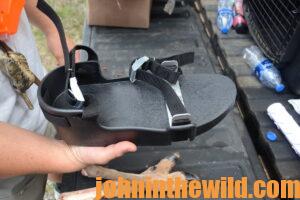
Dunn says that generally when he and Heavi are called out to track and trail a wounded deer, they’ll be going to an area that they’ve never been to before. So, Dunn takes a handheld GPS with him to mark where he leaves his truck. “I also have a GPS collar on Heavi, so I know where he is in relation to me at all times,” Dunn explains. “I’m amazed at what Heavi can do. If a deer crosses water like a little creek or a branch, Heavi will go back and forth, up and down the bank, until he’s absolutely certain of the place where that wounded deer has gone into the water. Then he’ll go across the creek and run back and forth, up and down the edge of the creek, until he’s absolutely certain where that deer has come out of the water. He follows that trail along the track the buck has left from his interdigital gland.
 “I’ve seen tracking dogs find bucks submerged in deep water, and I’ve seen tracking dogs track deer across water. Although I make a little money when I take Heavi out to track a deer, I mainly go out to find deer just to watch my amazing dog work.
“I’ve seen tracking dogs find bucks submerged in deep water, and I’ve seen tracking dogs track deer across water. Although I make a little money when I take Heavi out to track a deer, I mainly go out to find deer just to watch my amazing dog work.
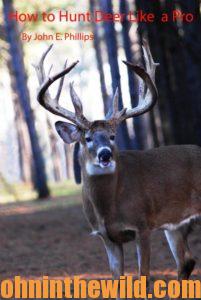 To learn more about hunting deer, check out John E. Phillips’ book, “How to Hunt Deer Like a Pro,” available in Kindle, print and Audible versions, at (http://amzn.to/YpoQHA). For more information about hunting for deer, check out John E. Phillips’ “Jim Crumley’s Secrets of Bowhunting Deer,” now available as of January 1, 2022, in Audible, as well as paperback and Kindle at https://www.amazon.com/.
To learn more about hunting deer, check out John E. Phillips’ book, “How to Hunt Deer Like a Pro,” available in Kindle, print and Audible versions, at (http://amzn.to/YpoQHA). For more information about hunting for deer, check out John E. Phillips’ “Jim Crumley’s Secrets of Bowhunting Deer,” now available as of January 1, 2022, in Audible, as well as paperback and Kindle at https://www.amazon.com/.
You may have to copy and paste these links into your browser. (When you click on either book, notice on the left where Amazon says you can read 10% of this book for free and hear 10% for free). On the right side of the page and below the offer for a free Audible trial, you can click on Buy the Audible book. To see many of John E. Phillips’ books, go to https://www.amazon.com/John-E.-Phillips/e/B001HP7K6O.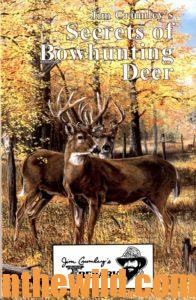
Tomorrow: Ways to Train and Equipment for Deer Tracking Dogs

